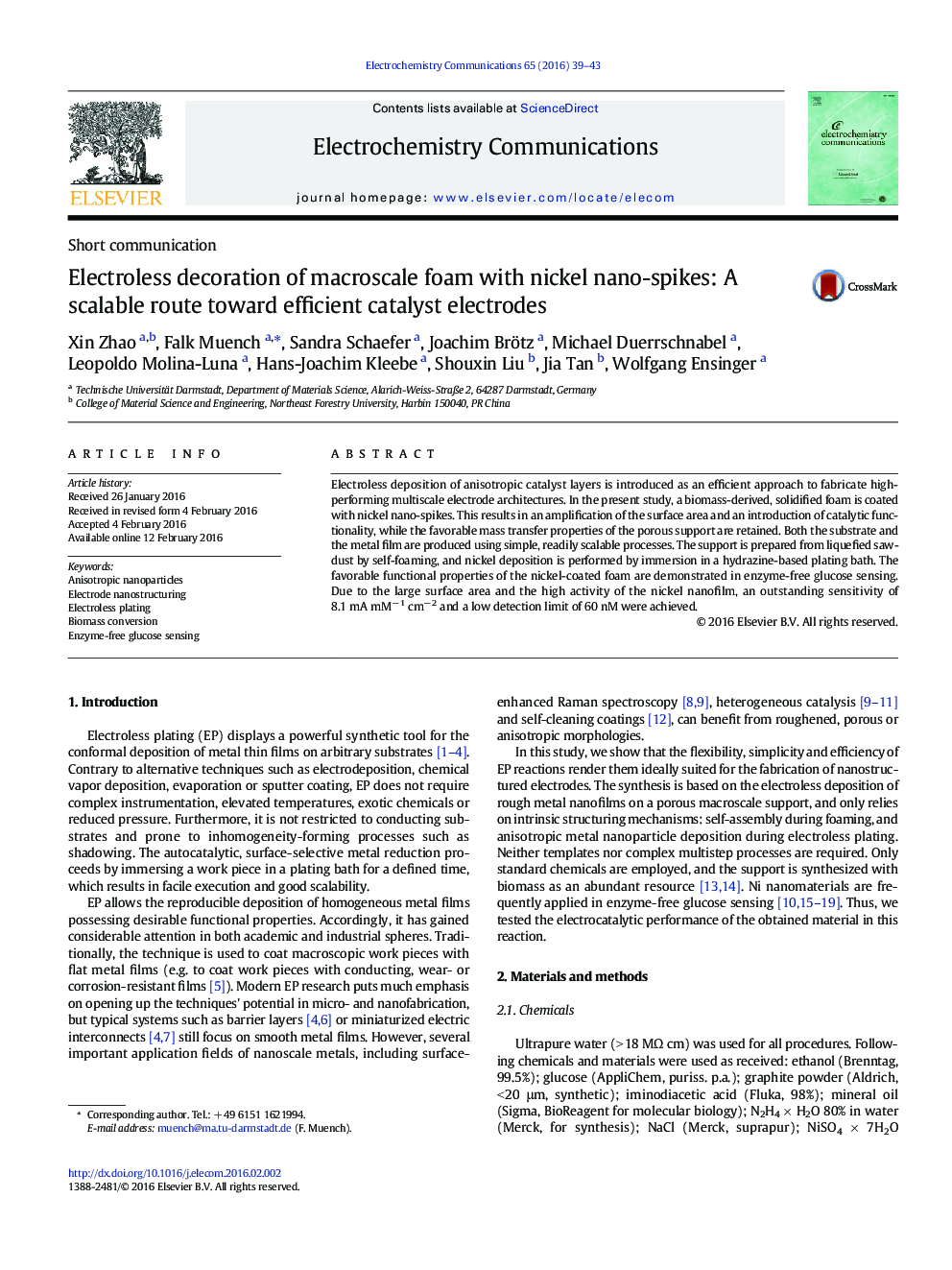| Article ID | Journal | Published Year | Pages | File Type |
|---|---|---|---|---|
| 178736 | Electrochemistry Communications | 2016 | 5 Pages |
•Facile preparation of a nanostructured Ni electrode•Macrostructure: self-foaming of wood-derived resin•Nanostructure: electroless deposition of Ni nano-spikes•Application as catalyst in enzyme-free glucose sensing (amperometry)•Extremely sensitive detection at optimized potential (down to 60 nM glucose)
Electroless deposition of anisotropic catalyst layers is introduced as an efficient approach to fabricate high-performing multiscale electrode architectures. In the present study, a biomass-derived, solidified foam is coated with nickel nano-spikes. This results in an amplification of the surface area and an introduction of catalytic functionality, while the favorable mass transfer properties of the porous support are retained. Both the substrate and the metal film are produced using simple, readily scalable processes. The support is prepared from liquefied sawdust by self-foaming, and nickel deposition is performed by immersion in a hydrazine-based plating bath. The favorable functional properties of the nickel-coated foam are demonstrated in enzyme-free glucose sensing. Due to the large surface area and the high activity of the nickel nanofilm, an outstanding sensitivity of 8.1 mA mM− 1 cm− 2 and a low detection limit of 60 nM were achieved.
Graphical abstractFigure optionsDownload full-size imageDownload as PowerPoint slide
